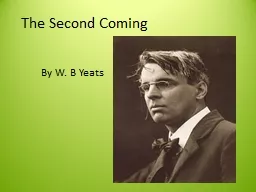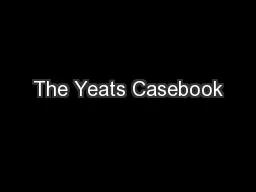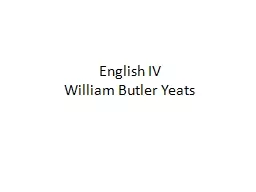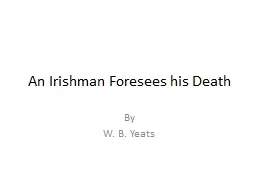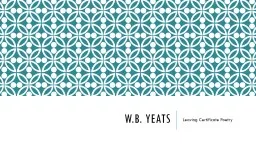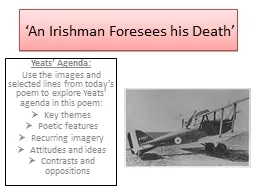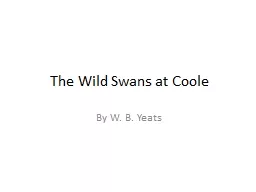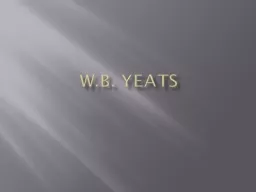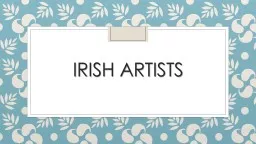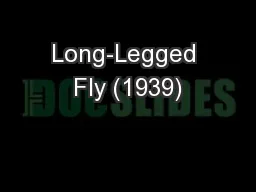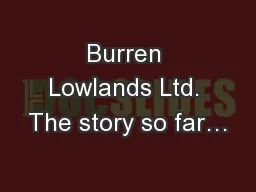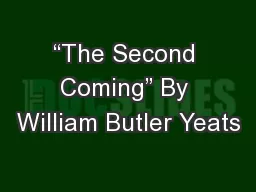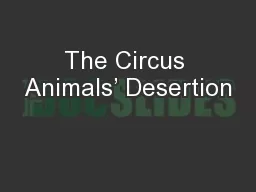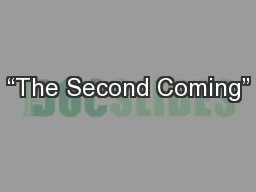PPT-The Second Coming By W. B Yeats
Author : liane-varnes | Published Date : 2018-03-14
Vocabulary gyre a spiral turn falcon a bird of prey falconer a person who trains falcons to capture prey mere total absolute anarchy total chaos and war dimmed
Presentation Embed Code
Download Presentation
Download Presentation The PPT/PDF document "The Second Coming By W. B Yeats" is the property of its rightful owner. Permission is granted to download and print the materials on this website for personal, non-commercial use only, and to display it on your personal computer provided you do not modify the materials and that you retain all copyright notices contained in the materials. By downloading content from our website, you accept the terms of this agreement.
The Second Coming By W. B Yeats: Transcript
Download Rules Of Document
"The Second Coming By W. B Yeats"The content belongs to its owner. You may download and print it for personal use, without modification, and keep all copyright notices. By downloading, you agree to these terms.
Related Documents

